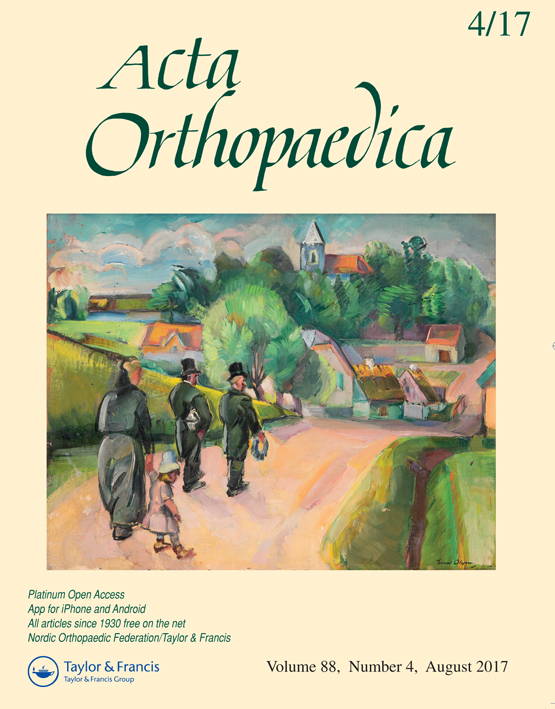Gastrocnemius recession: A cadaveric study of surgical safety and effectiveness
DOI:
https://doi.org/10.1080/17453674.2017.1314157Abstract
Background and purpose — Many methods of gastrocnemius lengthening have been described, with different surgical challenges, outcomes, and risks to the sural nerve. Our aims were (1) to locate the gastrocnemius muscular-tendinous junction in relation to the mid-length of the fibula (from here on designated the mid-fibula), (2) to compare the dorsiflexion achieved with dorsal recession or ventral recession, and (3) to determine the risk of injury to the sural nerve during gastrocnemius recession. Methods — In 10 pairs of fresh-frozen adult cadaveric lower extremities transected above the knee, we measured dorsiflexion, performed dorsal or ventral gastrocnemius recession at the mid-fibula, and then measured the increase in dorsiflexion and fasciotomy gap. We noted the course of the sural nerve and whether the gastrocnemius muscle provided it with enough muscular coverage to protect it during recession. Results — Dorsal and ventral recession produced statistically (p < 0.05) and clinically significant mean increases in dorsiflexion with extended knee from 12° to 19°, but they were not statistically significantly different from each other in this measure or in fasciotomy gap size. At the mid-fibula, the sural nerve coursed superficially between both heads of the gastrocnemius muscle in 14 of 20 specimens. Sufficient gastrocnemius muscle coverage to protect the sural nerve was provided by the medial head in 18 of 20 specimens and by the lateral head in only 5 of 20 specimens. Interpretation — A ventral gastrocnemius recession proximal to the mid-fibula level poses less risk to the sural nerve than a recession at the mid-fibula. This procedure provides adequate lengthening (1–3 cm) and increased dorsiflexion (compared with baseline), with less risk to the sural nerve than is incurred with recession at the mid-fibular reference line.Downloads
Download data is not yet available.
Downloads
Published
2017-07-04
How to Cite
Hoefnagels, E. M., Belkoff, S. M., & Swierstra, B. A. (2017). Gastrocnemius recession: A cadaveric study of surgical safety and effectiveness. Acta Orthopaedica, 88(4), 411–415. https://doi.org/10.1080/17453674.2017.1314157
Issue
Section
Articles
License

This work is licensed under a Creative Commons Attribution-NonCommercial 3.0 Unported License.
Acta Orthopaedica (Scandinavica) content is available freely online as from volume 1, 1930. The journal owner owns the copyright for all material published until volume 80, 2009. As of June 2009, the journal has however been published fully Open Access, meaning the authors retain copyright to their work. As of June 2009, articles have been published under CC-BY-NC or CC-BY licenses, unless otherwise specified.







